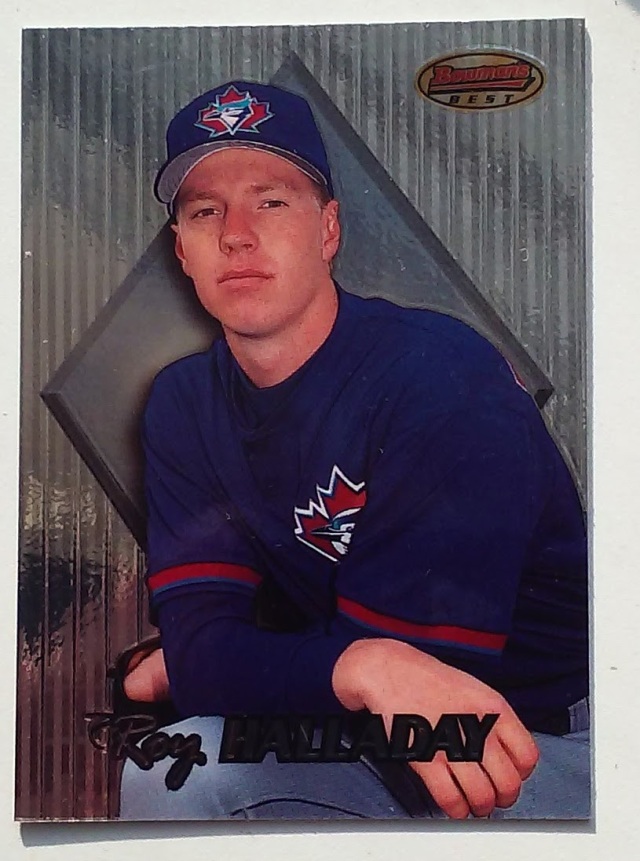It can be hard to accept certain things are real.
One of my earliest memories of realizing I dream I had could never come to fruition was that I could never be a professional baseball player. From a young age, I played in local rec leagues and was a player of middling ability. I held out hope for far too long that one day my body would realize it could make my arm throw hard and accurate enough to be a major league pitcher. Eventually reality sunk in. I could only ever be a fan of baseball and of the Toronto Blue Jays.
I am old enough to have been alive for the Jays’ back-to-back World Series titles in the early ’90s, yet I am young enough to have only a slight memory of jumping up-and-down as Joe Carter rounded the bases. Even still, the joy of that moment is ingrained in me. I thought baseball would always be like that. I thought the Blue Jays would always be the best. Starting in 1994, they were not. The team quickly devolved into basement dwellers of the A.L. East, leaving most of the city of the Toronto uninterested in baseball as the decade wore on.
When Roy Halladay made his major league debut for the Jays in 1998, I had just started high school. Baseball had taken a backseat for me as I got introduced to the painful awkwardness of puberty and the general awfulness of, well, being in high school. My fading fandom was also because the Blue Jays didn’t give us fans many things to be excited about. The team was just there, their mediocrity matching my experience in what pop culture had long promised me were going to be the best years of my life.
Notwithstanding hormones and bullies, Roy Halladay’s second career start is one of my best memories from high school. I wasn’t at the game. I don’t even think I watched the whole game on TV. But I remember he came within one out of throwing a no-hitter. I remember he pitched a complete game with only one hit. More than anything, I remember that he gave hope. For Blue Jays fans, it looked like the team finally had a young player who really looked like something. For me, I saw a player I could rally behind. I thought he was a little awkward and gawky looking, much like me. But his baseball talent looked unreal. You wanted Halladay to be great. And you wanted him to help the Jays win.
As many other articles being written this week will explain, Halladay’s greatness didn’t unfold overnight like we all hoped. There were times where people wrote him off as another Jays bust. I remember rooting for him to figure it out over those three years, while I myself was trying to figure out the social intricacies of being a teenager. Confounded by the latter, I put a much larger focus on being a fan of the Blue jays and a fan of Roy Halladay. I won’t rehash his underdog story here because all that really matters is, by the end of the 2001 season, Halladay was in Toronto to stay.
His legacy as a Blue Jay will not read as a literal champion, but it doesn’t have to. Roy Halladay was the Blue Jays for so many years. He was the reason you turned the game on. He was the reason fans went to the SkyDome. He was the reason you took your non-baseball fan friends to a game. Sure, the team might not amount to much this year but at least you can go watch the greatest active pitcher in his prime. He made Toronto want the Blue Jays to be good again as a reward for him – for his effort, his commitment, and his humanity.
It is a testament to Roy Halladay’s greatness on the field and and graciousness off it that we ultimately wanted him to be traded. We wanted him to go to a team where he could win on a level the Blue Jays could not. He gave his all for the team and they couldn’t hold up their end. Watching him pitch a perfect game and then a no-hitter in his first career playoff start for the Phillies certainly stung, but only for selfish, city-pride related reasons. You could only ever want Halladay to be a champion for himself in the way that he was for Toronto.
And so today I find myself having a hard time accepting that Roy Halladay is gone. He hasn’t pitched since 2013, but he has remained a larger-than-life figure in my baseball fandom regardless. Not only because he was why I went back to watching the team and sport I now enjoy beyond reason, but because he seemed to relish life after baseball so thoroughly. His Twitter was a randomly updated collection of posts and photos about spending time with his family, coaching little league baseball and learning to fly. It seemed like he wore a smile in every single photo, something he never did much of as a player. You no longer felt like you had to root for Roy Halladay.
He was at peace.

